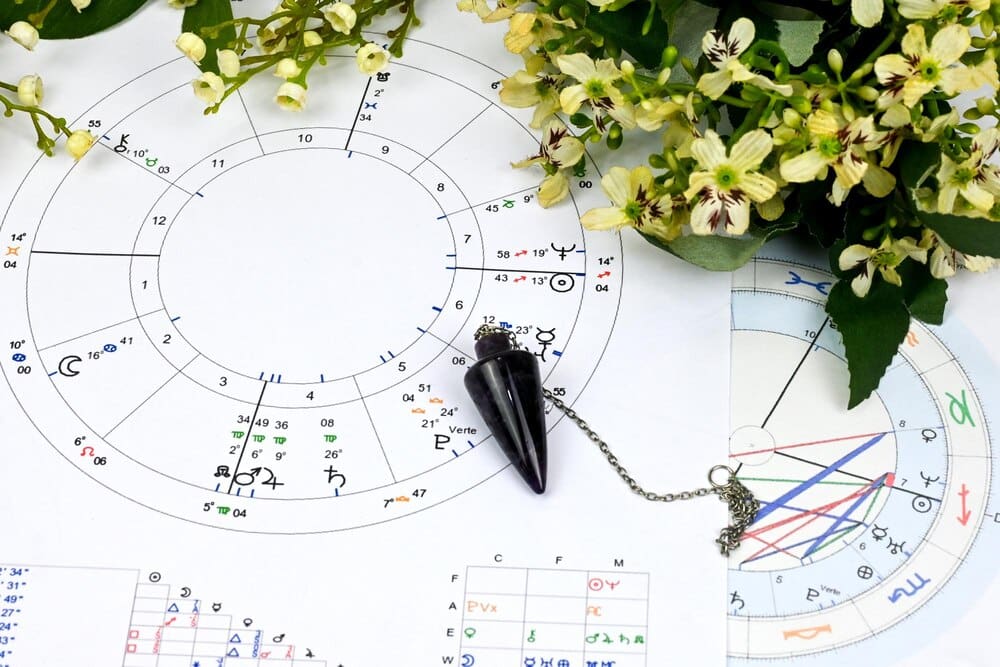The Divisional Charts, known in Vedic Astrology as Vargas, represent the single most powerful technique for moving beyond a surface-level reading of a birth chart into a deep, nuanced analysis of life’s specific domains. Used by seasoned astrologers, these sixteen primary charts function as a cosmic microscope, revealing the hidden strength, true nature, and ultimate promise of each planet concerning distinct areas such as marriage (Navamsha, D9), career (Dashamsha, D10), and children (Saptamsha, D7). This system works by mathematically dividing each of the twelve zodiac signs into smaller segments, creating a new, focused chart for each division, which allows an astrologer to determine why a planet that appears strong in the main birth chart may deliver weak results, or vice-versa, providing the ultimate key to predictive accuracy.
To truly grasp the power of the Vargas, one must first honor the primacy of the foundational birth chart, the Rashi chart or D1. The D1 is the physical body of the horoscope; it is the tree from which all branches of life grow. The divisional charts are the fruits on that tree. A Varga chart can never deliver a result that is not fundamentally promised in the D1. If the D1 chart does not indicate wealth, no divisional chart can magically create it. Instead, the Vargas reveal the quality, texture, and strength of the promises seen in the Rashi chart.
Think of the D1 as a wide-angle photograph of your entire life. The divisional charts are the zoom lenses, each calibrated to focus with stunning clarity on one specific aspect of that landscape. They show the subtle energies and the true disposition of the planets, which ultimately dictate the quality of your experiences.
The Foundation: Understanding the Rashi Chart (D1)
Before venturing into the intricate world of the Vargas, a complete and thorough analysis of the Rashi chart is non-negotiable. The D1 chart shows the tangible, physical manifestations in your life. It governs your personality, physical body, overall health, and the broad strokes of your destiny. The promises of career, relationships, and fortune must first be visible here.
The strength of a planet in the D1 chart indicates its raw potential to deliver results. A planet in its own sign, its sign of exaltation, or in a friendly sign has inherent power. Conversely, a planet in its sign of debilitation or in an enemy’s sign is compromised. The D1 sets the stage, and only after understanding its script can we appreciate the nuanced performances revealed in the divisional charts.
How to Analyze a Divisional Chart: The Core Principles
While each Varga has its unique focus, a consistent methodology applies to analyzing all of them. This systematic approach ensures you extract the most accurate and relevant information. An accurate birth time is absolutely critical for this work, as the Ascendant of many divisional charts can change in a matter of minutes.
The Varga Ascendant (Lagna)
The most important point in any divisional chart is its Ascendant, or Lagna. The sign rising in the Varga Lagna sets the tone for that area of life. The planet that rules this sign, the Varga Lagna Lord, becomes the primary functional benefic for that chart. Its placement—the house it occupies, its sign, and the aspects it receives within that Varga—is of paramount importance. A well-placed Varga Lagna Lord indicates ease and fortune in that domain, while a poorly placed one suggests struggle and obstacles.
Planetary Placements within the Varga
Next, assess the condition of all nine planets within the divisional chart. A planet that occupies its own sign, its exaltation sign, or a friendly sign within a Varga is considered strong for that specific area of life. For example, if Saturn is debilitated in Aries in the D1 chart but is exalted in Libra in the D10 (Dashamsha) chart, it indicates that while the person may face general struggles or delays (Saturn in D1), their professional life and career (D10) will be exceptionally strong, disciplined, and successful over time.
The Concept of Vargottama
One of the most powerful positions a planet can hold is Vargottama. This occurs when a planet occupies the same zodiac sign in both the Rashi (D1) chart and the Navamsha (D9) chart. A Vargottama planet gains immense strength and stability, ensuring that it delivers the results of its significations with great power and consistency throughout the person’s life. It is considered almost as powerful as a planet in its own sign.
The Key Divisional Charts You Need to Know
While the classical system of Parashara describes sixteen Vargas (Shodashvarga), modern practice primarily focuses on a select few that cover the most vital areas of human experience. Mastering these provides a profound level of insight.
Navamsha (D9): The Chart of Dharma, Spouse, and Inner Strength
The Navamsha is, without question, the most important divisional chart after the D1. It is often called the “fruit” of the Rashi “tree” and is considered a supplementary chart to the main chart itself. The D9 reveals the inner reality and the ultimate destiny of the soul. Its primary domain is marriage, partnership, and the nature of the spouse. The 7th house of the D9, its lord, and the placement of Venus (the natural significator of marriage) provide deep insights into marital happiness.
Beyond marriage, the D9 chart shows our Dharma, or life purpose. It reveals the true strength of the planets. A planet that appears weak in the D1 but is strong in the D9 will gain strength over time, especially in the second half of life. The D9 chart is the ultimate confirmation of planetary promise.
Dashamsha (D10): The Chart of Career, Status, and Action
The Dashamsha chart governs your profession, public reputation, achievements, and actions in society. It is the chart of your karma in the worldly sense. To analyze career, one must look at the D10 Lagna and its lord. The placement of the 10th lord of the D1 chart within the D10 is also crucial. Planets placed in the 10th house of the D10 chart become extremely prominent and indicate the nature of one’s work and legacy.
The Sun, Mercury, Jupiter, and Saturn are key planets to observe in the D10. Their strength and placement reveal your capacity for leadership (Sun), commerce (Mercury), wisdom and expansion (Jupiter), and service and discipline (Saturn).
Saptamsha (D7): The Chart of Children and Creativity
The Saptamsha chart is the domain of progeny, creativity, and the happiness one derives from their children. It provides detailed information about the possibility of having children, their well-being, and your relationship with them. The natural significator for children, Jupiter, must be carefully analyzed in the D7 chart.
The 5th house of the D7 chart is particularly significant for analyzing the first child, the 7th for the second, and so on. The D7 Lagna Lord’s condition reveals your overall happiness and fulfillment from your creative extensions into the world, whether through children or other creative projects.
Drekkana (D3): The Chart of Siblings, Courage, and Initiative
The Drekkana chart focuses on one’s siblings, courage, willpower, and motivation. Mars, as the natural significator of siblings and courage, is a key planet to assess here. The 3rd house of the D3 chart and its lord give specific information about younger siblings, while the 11th house relates to older siblings.
A strong D3 chart with a well-placed Mars and 3rd lord indicates a person of great fortitude and initiative, who has supportive relationships with their siblings. A weak or afflicted D3 can show cowardice or difficult relationships with brothers and sisters.
Chaturthamsha (D4): The Chart of Property, Home, and Happiness
This Varga relates to one’s fortune, specifically in the context of immovable assets like land, buildings, and vehicles. It also governs one’s mother and the concept of inner happiness and contentment (sukh). The Moon (mother, mind) and Mars (landed property) are vital planets in the D4 chart.
The 4th house of the D4 chart is the most critical point. Planets placed here will heavily influence your ability to acquire property and the level of happiness you experience in your home environment. A strong D4 is a blessing for domestic peace and material security.
Integrating Vargas with Dasha Timings
The true predictive power of divisional charts is unlocked when they are synthesized with the Vimshottari Dasha system, which maps out planetary periods. The Dasha of a particular planet activates its potential as seen in the D1 chart, but the quality and specific area of the results are determined by its position in the relevant Vargas.
For example, you may enter the major period (Mahadasha) of Jupiter. In your D1 chart, Jupiter might be well-placed, promising overall fortune. To know if this period will bring marriage, you must check Jupiter’s condition in the D9 (Navamsha). If it is strong and well-placed there, marriage is highly likely. To know if it will bring a career promotion, you check its placement in the D10 (Dashamsha). If it is weak there, professional results may be muted despite the overall positive Dasha.
Conclusion: The Soul of Predictive Astrology
The divisional charts are the soul of Vedic Astrology. They elevate a chart reading from a simple character analysis to a multi-layered, dynamic map of human potential. By learning to navigate the Vargas, we can understand the subtle forces that shape our destiny in every sphere of life. They provide the context, the detail, and the confirmation needed for accurate prediction. Approaching them with patience and a methodical framework transforms the horoscope from a flat, two-dimensional image into a living, breathing guide to understanding our past, navigating our present, and fulfilling our future promise.








